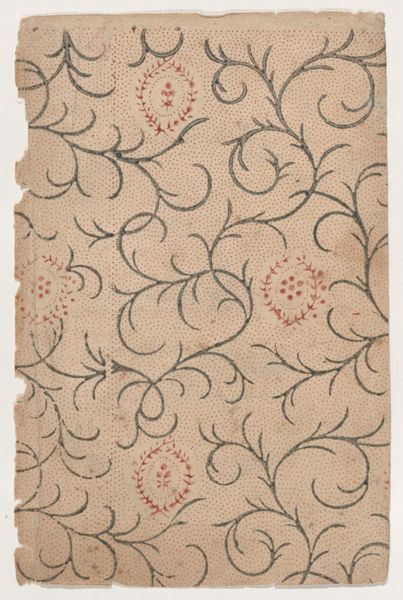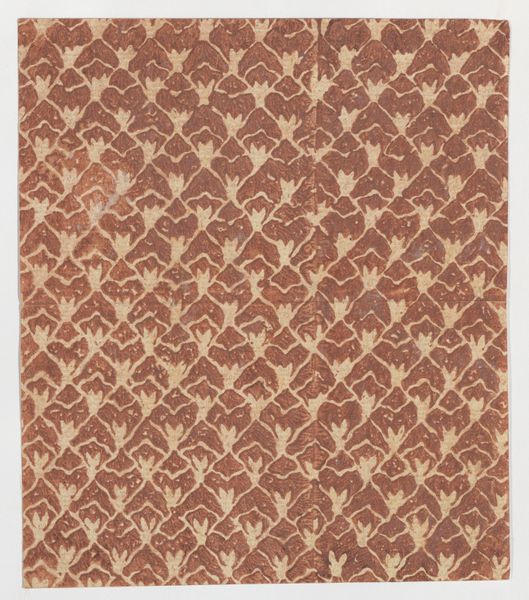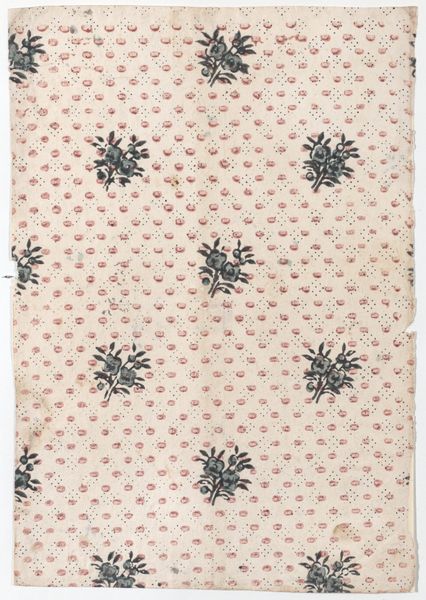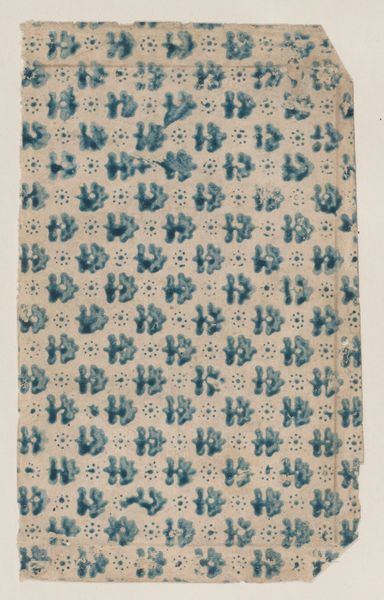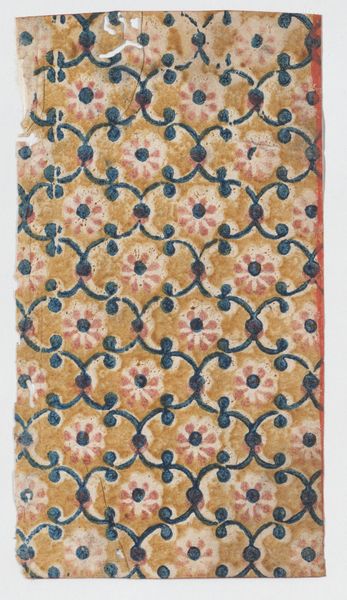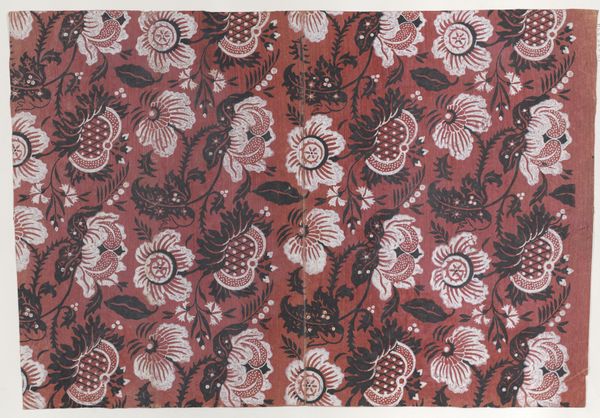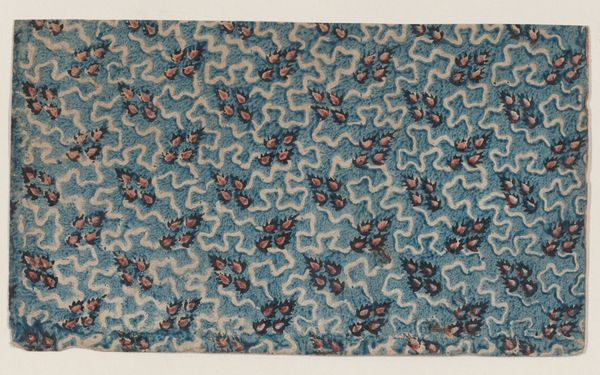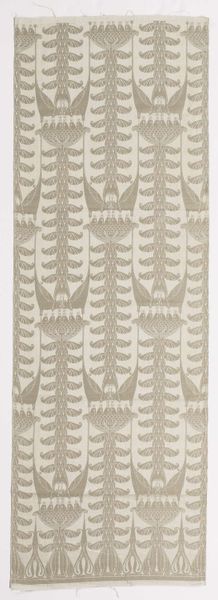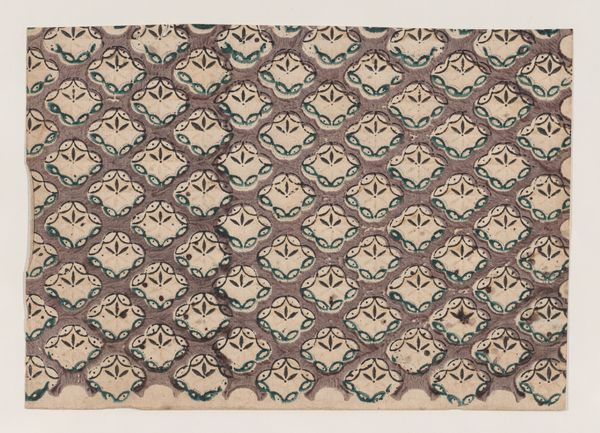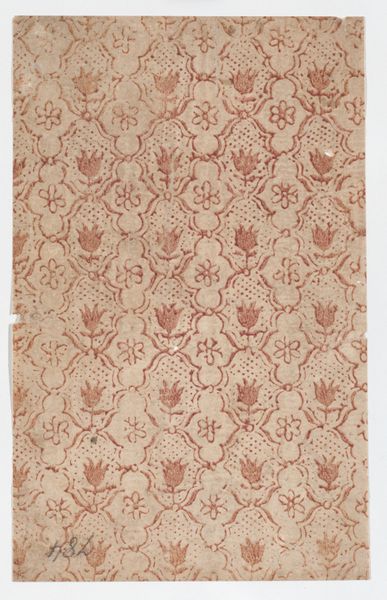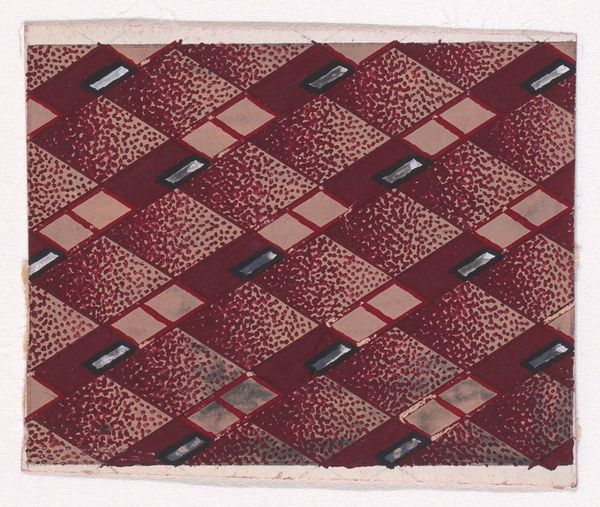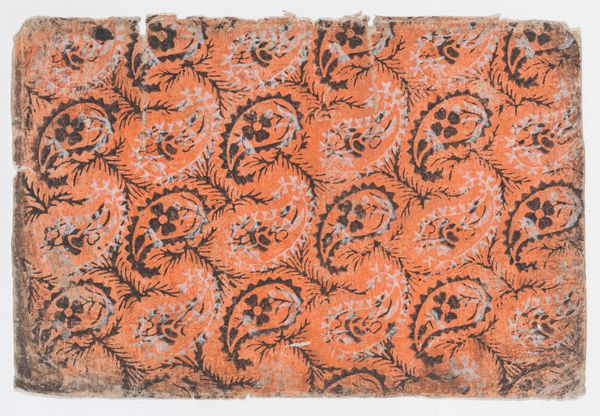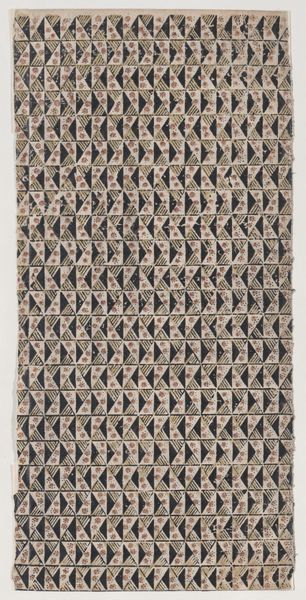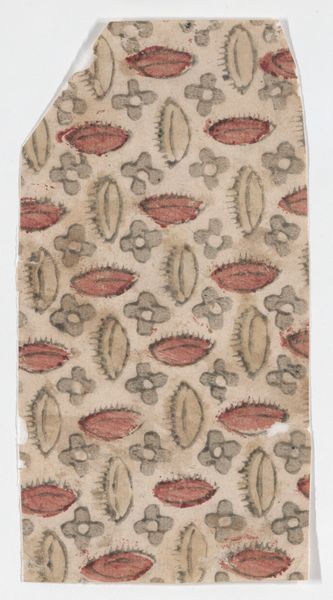
drawing, print, textile, paper
#
drawing
#
organic
# print
#
textile
#
fashion and textile design
#
paper
#
pattern design
#
repetitive shape and pattern
#
organic pattern
#
repetition of pattern
#
regular pattern
#
pattern repetition
#
textile design
#
imprinted textile
#
layered pattern
Dimensions: Sheet: 6 7/16 × 2 5/16 in. (16.3 × 5.8 cm)
Copyright: Public Domain
Editor: So, here we have an anonymous textile design from sometime in the 1800s, at the Met, called "Sheet with overall curved line pattern". It looks like it was made with print on paper, maybe for textile design. There’s something soothing and rhythmic about the repetition. What do you see in this piece? Curator: This simple pattern carries with it a legacy of labor, cultural exchange, and perhaps even resistance. Patterns like this weren't just decorative; they were often integral to cultural identities and economic survival. Think about who was making these textiles, and under what conditions. Was this a design intended for mass production, perhaps contributing to exploitative colonial economies? Or was it a piece connected to local craft traditions, potentially a form of cultural preservation or even silent protest against industrialization? Editor: That's interesting. I hadn’t considered that. I just saw it as a repeating design. Are you suggesting that the design itself could be a form of communication? Curator: Absolutely. The motifs, the colours, even the imperfections in the print – they all have the potential to tell a story. Textile designs were, and still are, powerful tools for expressing identity and cultural values. In many cultures, specific patterns are associated with certain social groups, rituals, or historical events. Think about the kente cloth of Ghana or the Indigenous bandanas in Central America—what stories are woven into their fibres? Does seeing the "imperfections" you mentioned, speak to a slower means of creation, prior to the Industrial Revolution? Editor: That does change how I see it. It’s not just a pretty pattern. It’s a reflection of a specific time and place and the lives of the people who created it. I’ll definitely be thinking about that more when I look at similar artworks. Curator: Exactly. And that is the beauty of engaging with art through a critical, historical lens – it opens up new avenues of understanding and empathy.
Comments
No comments
Be the first to comment and join the conversation on the ultimate creative platform.
